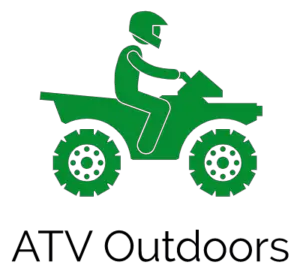



Braking is the first thing you need to learn to do the right way on an ATV. Many people are used to the ABS systems of their cars and are surprised to find out that ATVs function quite differently.
ATVs don’t use ABS. ABS braking is not good for off-road because it prevents the wheels from locking up and skidding. While this is an advantage on regular paved roads, you might want the wheels to completely stop when riding on rugged trails filled with mud.
Stick around if you want to learn how ABS works and check out the single Can-Am ATV model that does come with ABS.

ABS, or Anti-lock Braking System, is a safety feature designed to help maintain control of a vehicle during sudden stops. The main goal of ABS is to prevent the wheels from locking up and skidding, which can lead to loss of control. When you hit the brakes hard, sensors in ABS-equipped vehicles quickly measure the speed of the wheels. If they detect that a wheel is about to stop rotating while the vehicle is still moving, the system momentarily reduces the braking force to that wheel.
This process happens incredibly fast and can repeat several times per second. Essentially, ABS allows the wheels to maintain traction with the road surface, providing more stable and controllable braking. It’s especially useful in slippery conditions where wheel lock-up could be dangerous. By keeping the wheels from locking, ABS enables the driver to steer even during emergency braking, which can be a lifesaver in avoiding obstacles.
When it comes to ATVs, the use of ABS is not as straightforward as in cars or motorcycles. Traditionally, ATVs haven’t been equipped with ABS. The main reason for this is the nature of ATV use – they’re primarily designed for off-road conditions where the terrain is uneven, and the need for different braking techniques is essential. In such environments, the ability to lock the wheels can actually be beneficial, allowing for controlled slides and better maneuverability in certain situations.
However, the landscape is changing. As technology advances, some newer ATV models are beginning to incorporate ABS. This inclusion is particularly noticeable in ATVs that are designed for a mix of on-road and off-road use. The biggest ATV company that implements ABS braking is Can-Am. The model I am talking about is the Can-Am Outlander MAX 1000. The presence of ABS in these models caters to the on-road part of their usage, where the benefits of ABS in preventing skids and maintaining control are more pronounced. So, while ABS isn’t a standard feature in ATVs yet, it’s certainly making its way into the market.

The effectiveness of ABS in off-road conditions is a topic often debated on ATV forums. On one hand, ABS is great for maintaining control on slippery surfaces, like wet roads or icy conditions. It prevents the wheels from locking up, allowing the driver to steer while braking. This can be incredibly useful in certain off-road scenarios, such as driving on wet, muddy trails or slippery rocks. However, in many off-road situations, the ability to lock the wheels is actually an advantage. It allows for more aggressive braking when navigating steep, uneven terrain, and can help in executing turns more sharply.
Moreover, the effectiveness of ABS depends on how it is calibrated. Systems designed for on-road use might not perform optimally in off-road conditions. This is why some off-road vehicles with ABS offer the ability to switch the system off, giving the driver more control in situations where locked wheels are preferable. Therefore, while ABS can be beneficial in some off-road conditions, it’s not always the best choice, and having the option to disable it can be advantageous for skilled ATV riders.
Find out how ABS works and if ATVs are using this system or not.

